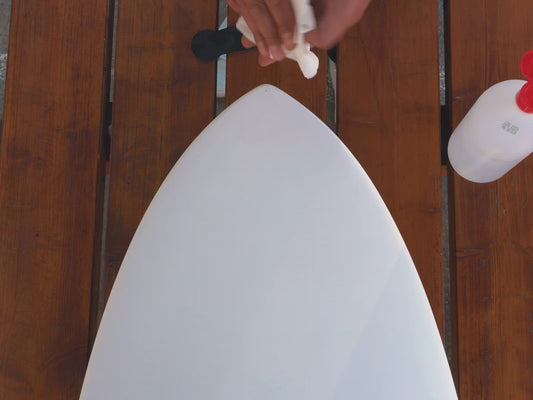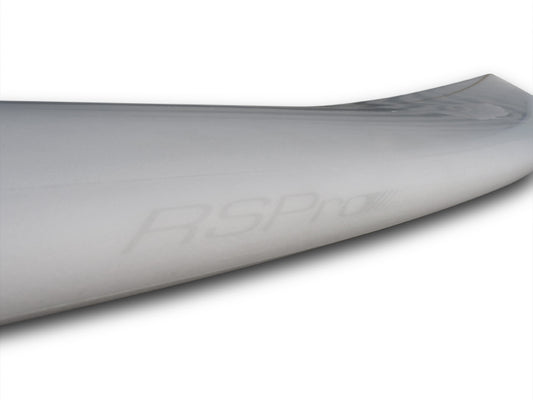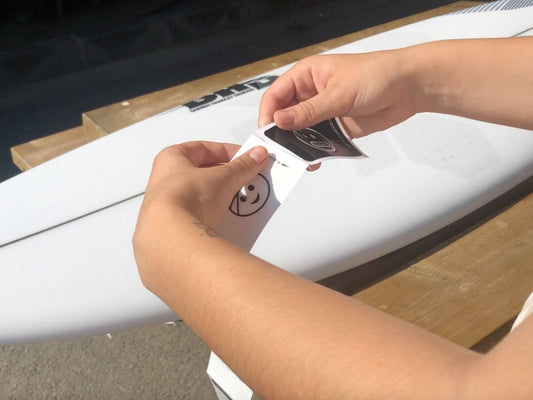Do surfers need traction pads?
Carles CarreraShare
As a surfer, you're always looking for ways to improve your performance and enjoyment in the water. One accessory that can make a big difference is a traction pad. But do surfers really need them? In this article, we'll explore the pros and cons of using traction pads, how to choose the right one, and alternatives to consider.
What is a traction pad?
A traction pad, also known as a deck pad or tail pad, is a non-slip pad that is attached to the tail of a surfboard (back foot grip) and sometimes in the middle of it (front foot grip).
Its main purpose is to provide extra grip and traction for the surfer's back foot (or front foot), especially during high-speed maneuvers and critical turns. Traction pads come in various shapes, sizes, and materials, but most commonly feature a diamond or hexagonal pattern that enhances grip and minimizes water absorption.

The pros of using a traction pad
Using a traction pad can have several benefits for surfers. Firstly, it provides improved grip and traction, allowing you to better control your board and generate more power and speed. This can be especially helpful in challenging conditions, such as big waves or windy days.
Secondly, it reduces foot fatigue by providing a comfortable and stable platform for your feet, which can help you surf longer and more comfortably. Thirdly, it can prevent injuries by reducing the risk of slipping or sliding off your board, which can lead to sprains, strains, or even more serious accidents.
Professional surfers also swear by traction pads at least for the back foot, while front foot traction is less common in competition.
The cons of using a traction pad
While there are many advantages to using a traction pad, there are also some potential drawbacks to consider.
One potential drawback to consider is that traction pads can be quite abrasive and can cause irritation or even blisters on the feet of some surfers, especially those who surf without booties and on the chest of surfers using front foot traction.
Additionally, some surfers may find that traction pads reduce their ability to move around on the board, the locked-in effect which can limit their maneuverability and limit the types of tricks and turns they are able to perform.
Despite these potential drawbacks, however, for most surfers the benefits of using a traction pad far outweigh any potential downsides.
In addition, traction pads can provide additional grip for advanced maneuvers like aerials, tail slides, and other tricks that require a high level of control and precision. When performing these maneuvers, surfers need to have complete confidence in their footing, and a traction pad can provide that extra level of grip that can make all the difference.
Traction pads also offer a level of comfort for the surfer. When paddling out or waiting for a wave, the feet can often become sore from the constant pressure on the deck of the board. Traction pads with cushioning can help alleviate this discomfort, allowing the surfer to focus on the task at hand and enjoy the experience.
But not all surfers use traction pads. Some surfers prefer the feel of wax on their board and find that they have better control without a traction pad. Others feel that a traction pad can restrict their foot movement, making it harder to adjust their footing on the board.
Ultimately, whether or not a surfer needs a traction pad comes down to personal preference. Some surfers swear by them, while others prefer the traditional feel of wax. It's important for each surfer to experiment and find what works best for them.
At RSPro, we offer a wide range of traction tail pads to suit every surfer's needs. Always as alternative to surf wax and eva pads. Our pads are made from sustainable high-quality materials, designed to withstand the rigors of surfing, and provide superior grip and comfort.

Whether you're a beginner or a wannabe pro, we have a traction pad that will help you take your surfing to the next level.
In conclusion,
While surfers don't necessarily need traction pads to surf, they can provide a number of benefits, including improved grip, comfort, and the ability to perform advanced maneuvers.
Ultimately, the decision to use a traction pad comes down to personal preference, and surfers should experiment to find what works best for them. At RSPro, we offer a variety of high-quality traction pads that can help take your surfing to the next level.








